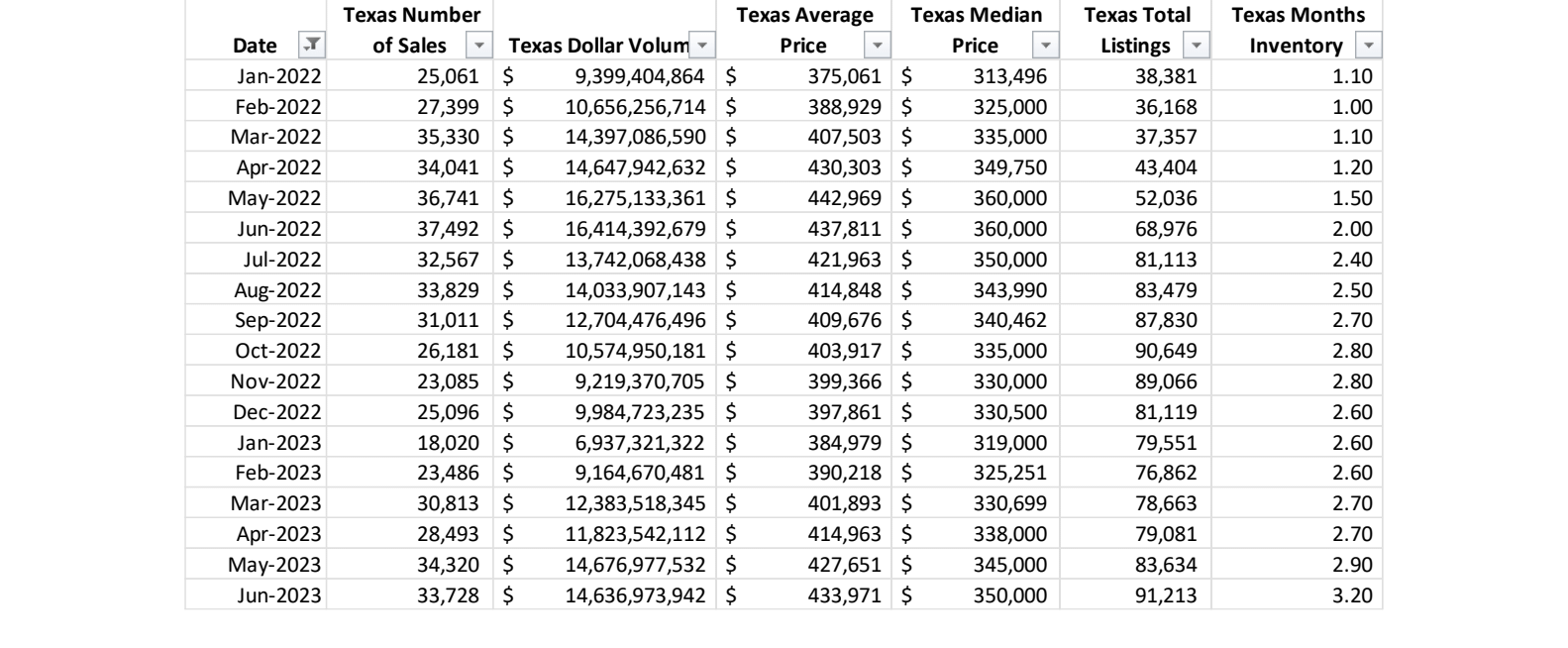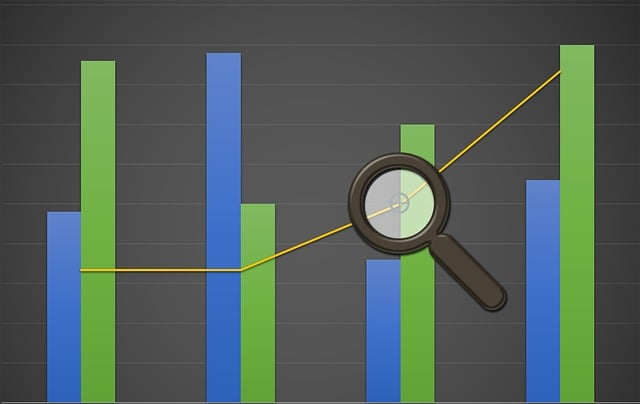How Many Months of Inventory is a Balanced Market in 2023?
Ever wondered why some homes sell quickly while others linger on the market? The answer lies in understanding months of inventory and market conditions, specifically “how many months of inventory is a balanced market?” This essential knowledge can help you make informed decisions when buying or selling a property. Are you ready to dive into the world of months of inventory and learn how to navigate various market conditions, including the balanced market? Let’s begin!
Key Takeaways
Months of inventory is a key metric used to assess market conditions and inform buying/selling decisions.
A balanced market can be identified by assessing the six-month benchmark and exploring varying conditions for different property types.
Real estate professionals must stay informed on industry reports, leverage tools & techniques, and adapt their negotiation tactics in order to provide expert analysis & successful negotiations for clients.
Understanding Months of Inventory

The current state of the real estate market can be determined by comparing the rate of sales to the number of properties available, a process facilitated by a key metric – months of inventory. This current inventory affects home prices and can indicate whether it’s a buyer’s market, where there are more homes for sale than buyers, or a seller’s market, where demand outpaces supply.
Gaining a clear understanding of months of inventory requires delving into its definition and calculation method. This will provide the foundation for understanding how months of inventory impacts market conditions and home prices.
Definition of Months of Inventory
Months of inventory, also known as months supply, represents the length of time it would take to sell all properties currently on the market. It serves as a vital indicator of market conditions, shedding light on whether it’s a buyer’s or seller’s market. By factoring in pending sales, months of inventory can offer valuable insights into the current state of the real estate market, helping buyers and sellers make informed decisions.
Both buyers and sellers can benefit from understanding months of inventory, as it directly influences their negotiation power and the final sale price. A higher months of inventory signifies a buyer’s market, while a lower one indicates a seller’s market.
Calculating Months of Inventory
The calculation of months of inventory is quite straightforward. To determine the months of inventory, divide the current supply of homes by the average number of homes sold per month. For example, if there are 120 homes on the market and an average of 20 homes sell each month, the months of inventory would be six (120 ÷ 20 = 6).
Identifying whether the market favors buyers or sellers is made possible by this calculation, which reveals the balance between supply and demand. As you’ll soon discover, this knowledge plays a significant role in determining home prices and negotiating power.
Identifying a Balanced Market

A balanced market is one where the supply of properties and the number of potential buyers are roughly equivalent. In such a market, neither buyers nor sellers have a significant advantage, and prices tend to remain stable. The key to identifying a balanced market lies in understanding the six-month benchmark and how market conditions can vary by property type and location.
A more nuanced picture of the real estate market can be understood by delving into the six-month benchmark and exploring the differing market conditions for various property types.
The Six-Month Benchmark
The six-month benchmark is a widely-accepted metric for a balanced market. When the months of inventory equal six months, it signifies an equilibrium between supply and demand, or in other terms, six months of supply. In other words, the market is balanced, with neither buyers nor sellers having a significant advantage.
However, it’s essential to remember that the six-month benchmark is not a one-size-fits-all solution. Market conditions can vary for different property types and locations, requiring a more nuanced analysis to determine the true state of the market.
Market Variations by Property Type
Conditions can differ significantly depending on the type of property and its location. For instance, single-family homes in a desirable neighborhood may experience a seller’s market with limited inventory and high demand, while a nearby condominium complex could be facing a buyer’s market with an abundance of available units.
Being aware of these variations can help you make better-informed decisions when buying or selling a property. By understanding how months of inventory and market conditions can vary by property type, you can adjust your strategies accordingly to achieve the best possible outcome in your real estate transaction.
Impact of Months of Inventory on Home Prices

Months of inventory has a significant impact on home prices, as it can reveal whether the market favors buyers or sellers. In a buyer’s market, an abundance of homes for sale can lead to lower prices and longer selling times. On the other hand, a seller’s market with limited inventory can result in higher prices and bidding wars due to increased demand. Understanding how inventory affect home prices is crucial for both buyers and sellers to make informed decisions in the market.
A clearer understanding of how months of inventory affects home prices can be achieved by separately examining the effects of buyer’s and seller’s markets.
Buyer’s Market Effects
In a buyers market, there is an abundance of homes for sale and a lack of buyers, leading to extended listing periods and decreased sale prices. Buyers can leverage this situation to their advantage by conducting comprehensive research, submitting lower offers, and negotiating favorable terms.
It’s worth noting that not all buyer’s markets are the same. Market conditions can vary by property type and location, so it’s essential to stay informed about local market activity and trends to make the most of the opportunities available.
Seller’s Market Effects
In a sellers market, there is a limited inventory of homes for sale and more buyers than sellers. This can result in heightened competition and bidding wars, potentially driving up home prices. Sellers may have more leverage in this type of market and can obtain a more favorable deal on the sale of their home.
Much like buyer’s markets, seller’s markets can also vary based on property type and location. Staying informed about local market activity and trends can help sellers make the most of their opportunities in a seller’s market.
Navigating Different Market Conditions

Whether you’re a buyer or a seller, understanding market conditions and months of inventory can help you make better decisions during the real estate transaction process. By employing the right strategies for the current market, you can increase your chances of success and achieve your desired outcome.
Examining specific strategies for both buyers and sellers in different market conditions can bolster your confidence in navigating the real estate market.
Strategies for Buyers
In a seller’s market, buyers should act quickly, be pre-approved for a mortgage, and submit competitive offers to stand out among other potential buyers. It’s also essential to consider market trends when making offers, as this can help you strike the right balance between securing your dream home and not overpaying.
In a buyer’s market, on the other hand, buyers have more room to negotiate and capitalize on reduced prices. By conducting thorough research, taking advantage of market conditions, and working closely with a real estate agent, buyers can find the best deals available and make well-informed decisions.
Strategies for Sellers
Sellers in a buyer’s market should consider the following strategies:
Consult with a real estate agent
Improve their home’s curb appeal
Price their homes competitively to attract more potential buyers
Be flexible with showings
Be open to negotiations
These strategies can help sellers secure a favorable deal in a buyer’s market.
In a seller’s market with limited active listings, sellers should take advantage of the heightened demand by:
Pricing their homes competitively
Being prepared to act swiftly
Working closely with a real estate agent
Being open to multiple offers
By following these strategies, sellers can maximize their profits and achieve a successful sale.
Local Market Activity and Trends

Monitoring local market activity and trends is crucial for staying informed and making better decisions in real estate transactions. By keeping an eye on the local market data, such as:
Months of inventory
Average days on market
Median sales price
Number of new listings
Number of closed sales
You can identify market conditions and trends that can impact your buying or selling decisions.
It’s worth learning how to monitor local market data and identify market shifts, which can help you capitalize on changing conditions and optimize your real estate transaction.
Monitoring Local Market Data
Keeping an eye on local market data, including months of inventory, can help you identify market conditions and trends. Staying informed with local news, analyzing local market data, and consulting with a real estate professional are all viable strategies for monitoring local market activity and trends.
By monitoring local market data, you can:
Make more informed decisions about when to buy or sell a property
Determine what price to offer or accept
Negotiate the best possible deal in the current market conditions.
Identifying Market Shifts
Recognizing market shifts and adjusting your strategies accordingly can help you capitalize on changing conditions and make the most of your real estate transaction. For example, if months of inventory suddenly decrease, indicating a shift from a buyer’s market to a seller’s market, sellers might consider raising their asking prices, while buyers might need to act more quickly to secure a home.
By keeping a close eye on local market activity and trends, you can identify market shifts and adapt your strategies to ensure success in your real estate transaction, regardless of the current market conditions.
Tips for the Real Estate Professional

Assisting clients in navigating the complex world of buying and selling properties is a crucial role played by real estate professionals. By understanding months of inventory and market conditions, professionals can provide expert market analysis and negotiate effectively on behalf of their clients.
Here are some tips for real estate professionals on providing expert market analysis and navigating negotiations in various market conditions.
Expert Market Analysis
Offering clients valuable insights into market conditions by analyzing months of inventory and other market data is a crucial skill for real estate professionals. By leveraging a combination of market analysis tools and techniques, such as Comparative Market Analysis (CMA), Absorption Rate Analysis, and Price Trend Analysis, professionals can provide clients with a comprehensive understanding of the current market conditions.
Staying informed about industry reports and insights from organizations like the National Association of Realtors (NAR) can also help professionals provide expert market analysis and better serve their clients.
Negotiating in Various Market Conditions
Using knowledge of market conditions to negotiate effectively on behalf of clients, whether they are buyers or sellers, is an essential skill for real estate professionals. By understanding the current months of inventory and market trends, professionals can tailor their negotiation strategies to suit the specific market conditions, ensuring the best possible outcome for their clients.
Whether working with buyers in a seller’s market or sellers in a buyer’s market, real estate professionals must stay informed about market conditions and adjust their tactics accordingly to help clients achieve their desired results.
Summary
Understanding months of inventory and market conditions is essential for anyone involved in the buying or selling of real estate. By monitoring local market data, identifying market shifts, and adopting the right strategies for various market conditions, both buyers and sellers can navigate the real estate market with confidence and achieve their desired outcomes. Real estate professionals can also utilize this valuable knowledge to provide expert market analysis and negotiate effectively on behalf of their clients. Stay informed, stay flexible, and embrace the power of months of inventory to succeed in the ever-changing world of real estate.
Looking for creative solutions in a record-low inventory market?…check out our blog: https://www.quickcommissionadvance.com/blog/exploring-creative-solutions-for-realtors-in-a-record-low-housing-inventory-market/
Frequently Asked Questions

What does 6 months of inventory mean?
Having 6 months of inventory in real estate means that all current listings would take 6 months to sell given no new listings enter the market.
What does 2 months of inventory mean?
Having two months of inventory means that it would take two months for the current properties for sale to be sold, given the current average monthly sales pace. This is an important metric for buyers and sellers alike, as it gives an indication of how quickly properties are selling in the area. It also helps buyers and sellers determine the best time to buy or sell a property.
How do you calculate months of inventory?
To calculate months of inventory, divide the total number of active listings from last month by the total number of sold transactions from the same period. This will reveal the number of months of inventory remaining on the market.
What months have the most housing inventory?
Spring is the best time to shop for a house as there is plenty of inventory available, although competition among buyers may cause prices to rise. Winter is a more affordable option but there is usually less inventory on offer.
How does months of inventory affect home prices?
High levels of inventory suggest a buyer’s market, resulting in lower home prices. Conversely, low levels of inventory indicate a seller’s market and lead to higher home prices.







